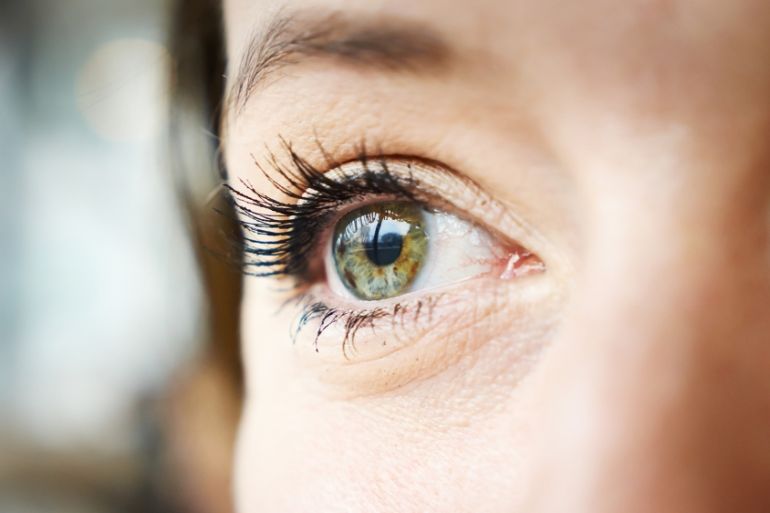Doctor’s Note: Are eye infections a symptom of coronavirus?
New evidence suggests that conjunctivitis – or ‘pink eye’ – can be a sign that you have caught COVID-19.

There have been several well-documented symptoms associated with coronavirus, including a sore throat, dry cough and a high fever, as well as loss of taste and smell. Now, it seems that conjunctivitis (also known as pink eye) has been reported as another symptom in some patients who have contracted the virus.
Recently, a nurse told news reporters in the United States that she and her colleagues from a Life Care Center in Washington state suspected that conjunctivitis could, in fact, be a significant tell-tale sign that someone has contracted COVID-19.
Keep reading
list of 4 itemsDoctor’s Note: Is obesity a risk factor for coronavirus?
Doctor’s Note: Does coronavirus cause loss of smell and taste?
Doctor’s Note: Why are more men dying from coronavirus?
The Severe Acute Respiratory Syndrome (SARS) pandemic of 2003, which also involved a strain of coronavirus, reinforced that the eye can, in fact, transmit infection.
A study by Chinese scientists has found that, although the incidence of transmission was extremely low, the coronavirus can penetrate the ocular surface. This makes sense, given that the virus can enter through other mucous membranes, such as those in our nose and mouth.
How it works
Conjunctivitis is the inflammation or swelling of the conjunctiva, the thin layer of tissue that lines the inner surface of the eyelid.
Conjunctivitis is typically caused by a viral or bacterial infection, but it can also develop due to acute allergic reactions or environmental irritants like pollen.
The same viruses that cause the common cold and influenza can cause conjunctivitis.
When you are sick, you can spread the infection to your eye through physical contact, such as sneezing into your hand and then rubbing your eye. This is also true for the COVID-19 virus. This is why health officials recommend that you wash your hands frequently and avoid touching your face.
Because the coronavirus is encased in lipids (or fat), soap can dissolve the virus just like dish soap cuts through grease.
When you wash your hands with soap and warm water, you not only decrease the chance of transmission, you also increase the odds of killing the virus.
Taking these measures will reduce your chances of contracting COVID-19, and if you are already infected, they will help limit the spread of the disease to vulnerable places like the eye.
How do you know if you have conjunctivitis?
You may have conjunctivitis if you have pink or red eyes, increased tear production, itching, irritation, burning, discharge, and/or crusting of the eyelids or eyelashes, especially upon awakening.
Viral conjunctivitis can occur alongside symptoms of a cold or flu, and it may look different from the symptoms described above.
The discharge from the eye may be more watery, rather than thick or mucousy, and the infection typically starts in one eye and then spreads to the other because it is highly contagious.
When to worry
Although conjunctivitis has been reported in only 1 percent of COVID-19 patients, it is important to note that if you have conjunctivitis coupled with respiratory symptoms and a fever, you may have contracted the coronavirus.
Call your physician before visiting the doctor’s office so that you avoid transmitting the virus to others.
How to prevent the spread and protect yourself
As described above, it is important to wash your hands often and to avoid touching your face, especially after you have come into contact with public or shared surfaces.
The virus can also spread through aerosol transmission in pathogenic droplets – which have been sneezed or coughed out by someone carrying the virus – in the air, tears and other ocular secretions.
Therefore, it is critical to protect yourself at home as well. Do not share eye drops, contact lens cleaner or cosmetics with other people, and do not share a toilet with a person who has symptoms of COVID-19.
Wash your pillow covers, face towels and hand towels, and throw away any makeup that has been used while you were symptomatic, or that you used in the days prior to the onset of symptoms. As we have learned, coronavirus can last anywhere from hours to days on the surface of objects.
With conjunctivitis showing as a symptom of COVID-19, it is possible that ophthalmologists may be the first in contact with the virus. Therefore, it is extremely important that healthcare providers wear eye protection in addition to masks, gloves and gowns.